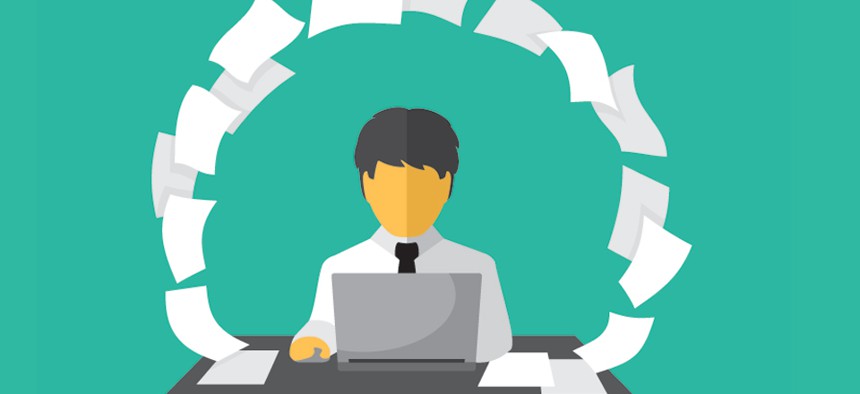
VoodooDot/Shutterstock.com
How the Rush Syndrome Affects Your Job and Your Health
Adrenaline addiction can be as harmful as cocaine.
“So much to do, so little time.”
Sure, it’s a cliche, but it’s also a pretty accurate description of how many of us operate on a daily basis. We walk fast, talk fast, think fast. We multitask, answering emails while sitting in a staff meeting, making phone calls while we munch on a sandwich we don’t even taste.
Why do we do this? Reasons and excuses abound. Do some of these resonate with you?
- My organization is totally focused on results. If I don’t produce consistently, I’ll be left behind.
- It’s great for my image. I’m known for how much I accomplish.
- My to-do list never ends. But I feel good when I cross off the tasks I’ve completed.
- I love the buzz. I feel like I’m on a high all day long.
We hear a lot of talk about work-life balance, and many of us are determined to bring that quality into our work and our personal lives. But like a horse chomping at the bit in the starting gate, when that bell rings we’re off and running, down the track at breakneck speed once again.
Consider the following points for a moment and see exactly how the “rush syndrome” is affecting you.
The more you produce, the more people expect of you. It’s great to be the go-to person whose superiors can always count on to get the job done. But at what point does the pattern shift from accomplishment to overload and burnout? If you sometimes feel you can’t muster the energy to complete an assignment, you’re approaching burnout. If your emotions are close to the surface, if minor glitches produce a major reaction, you’re approaching burnout.
How to break this “rush syndrome” cycle: Take a break. Take a day off, or even an hour. Make list of things you’d like to get off your plate. Talk to your boss, a trusted adviser, or an executive coaching specialist about restructuring your workload.
High productivity doesn’t always equal high-quality work. Technology feeds the illusion that multitasking is a skill we should learn and use consistently. But a notable research study by Clifford Nass of Stanford University shows just the opposite. People who try to do several things at once do all of them less well than those who focus on one task at a time. Jumping from one thing to another doesn’t save time—it costs time. Every time you switch tasks, you have to readjust your brain and refocus your attention. For example, you’re writing an important presentation when that ever-present ping signals an incoming email. You switch into email mode, maybe even take time to answer, and when you switch back to the presentation, you can’t remember your last important thought.
How to break this “rush syndrome” cycle: Resolve to control technology, not let it control you. Switch off your email when you’re working on a project. Make one day a week technology-free. Start with an hour if you can’t tolerate a whole day.
Adrenaline addiction can be harmful to your health. Adrenaline addiction is as real as cocaine or alcohol addiction and can be just as harmful, both physically and mentally. Of course, we frown on substance abuse, but we often reward adrenaline addicts for the results their frantic activity produces. The addicts get hooked on the need to prove themselves worthy of the job. They get the high from the kudos and the recognition until one day they feel that life is about to spin out of control.
How to break this “rush syndrome” cycle: Just like recovery from any other addiction, the first step is to acknowledge that you have a problem. Confide in those close to you that you are trying to break the habit. Ask them to stop promoting or enabling your addictive behavior. Get help from a coach or find (or start) a support group.
When you break any or all of these “rush syndrome” cycles, you’ll see measurable results. You’ll produce excellent work, you’ll make better-quality decisions, and you’ll feel a calm energy that nourishes rather than drains you. Why not start today?
Joel Garfinkle is a motivational speaker and author of seven books, including Getting Ahead: Three Steps to Take Your Career to the Next Level.
(Image via VoodooDot/Shutterstock.com)






